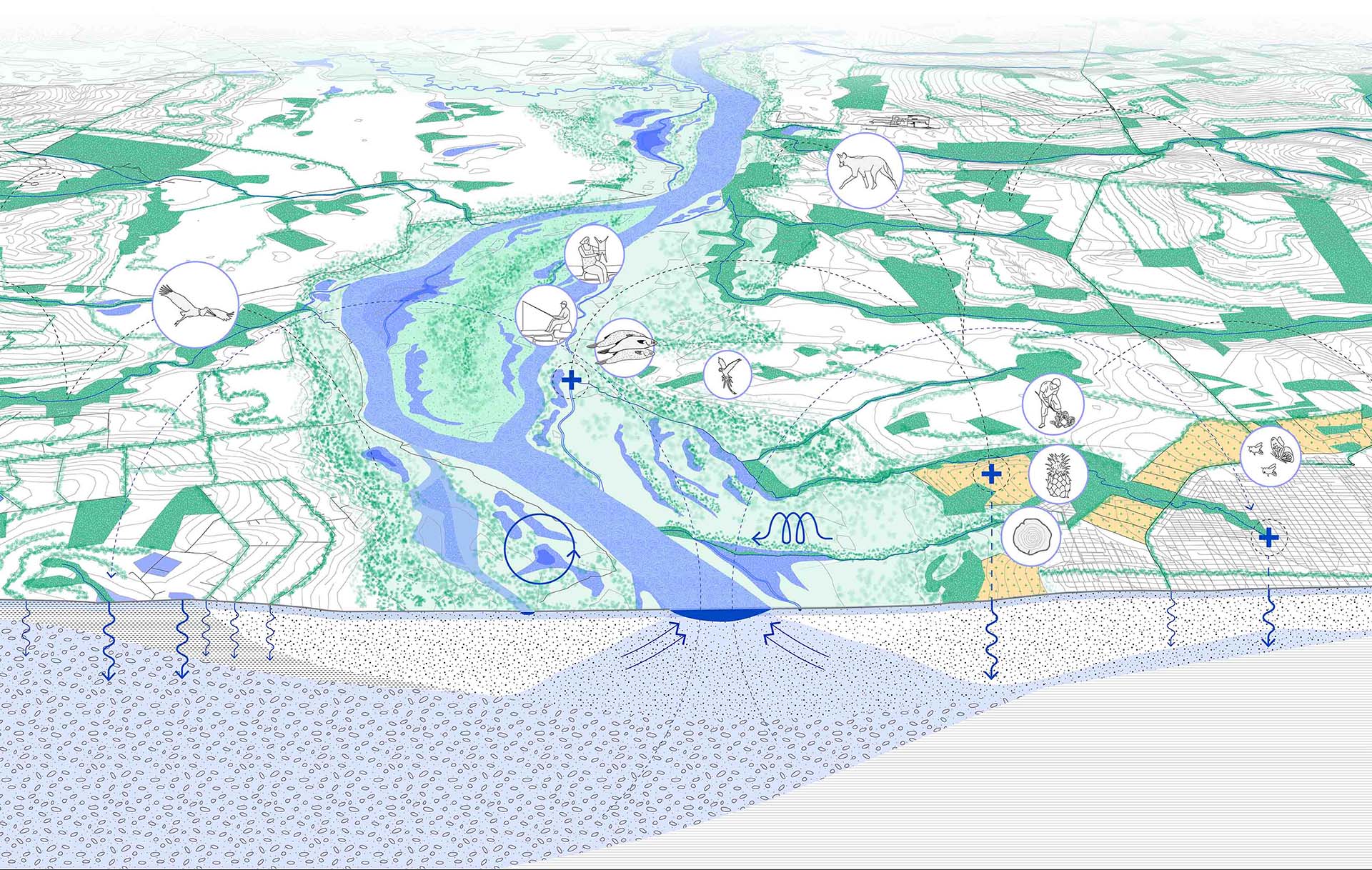Victoria Imasaki Afonso
Flowscapes
The River and the Mosaic: Regenerative Cycles in Production Landscapes
The Paraná River, the second longest in South America, has always been a migration axis for flora and fauna and, most recently, a strong economic artery for the continent. However, in 2019, a severe drought struck the Upper Paraná River Basin (UPRB) in Brazil, causing unmeasurable economic and ecological losses.
The land use in the UPRB consists of vast mono-crop plantations of sugar cane and grazing fields, embodying the hypothesis of a ‘Plantationocene’ (Haraway, 2015), as many landscapes in the Global South do (Ferdinand, 2021). While lucrative, this typology has minimal water retention capacity, resulting in a vulnerable, easily disrupted hydrologic cycle.
‘The River and the Mosaic’ is about regenerating water cycles in deeply exploited plantation landscapes. A significant conclusion is as follows: if not approached from a purely technical point of view, drought prevention can leverage a landscape’s resilience, ecological value, cultural and leisure opportunities, and economic autonomy as a whole.
